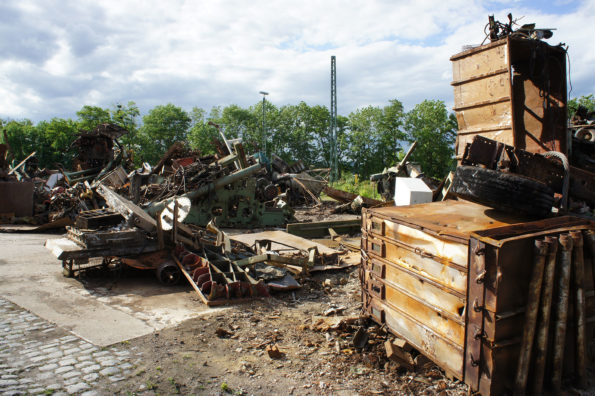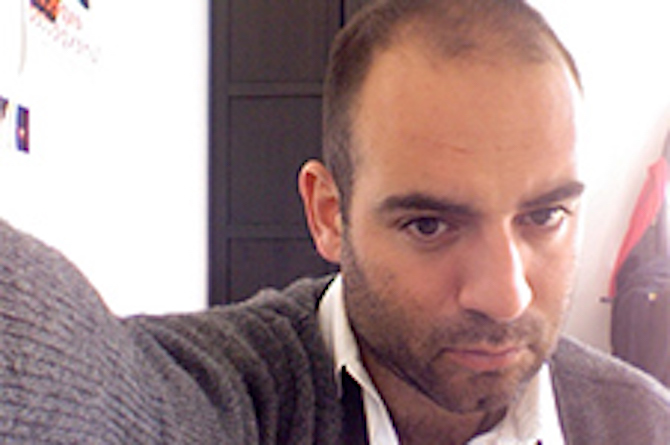Search
To search for an exact match, type the word or phrase you want in quotation marks.
A*DESK has been offering since 2002 contents about criticism and contemporary art. A*DESK has become consolidated thanks to all those who have believed in the project, all those who have followed us, debating, participating and collaborating. Many people have collaborated with A*DESK, and continue to do so. Their efforts, knowledge and belief in the project are what make it grow internationally. At A*DESK we have also generated work for over one hundred professionals in culture, from small collaborations with reviews and classes, to more prolonged and intense collaborations.
At A*DESK we believe in the need for free and universal access to culture and knowledge. We want to carry on being independent, remaining open to more ideas and opinions. If you believe in A*DESK, we need your backing to be able to continue. You can now participate in the project by supporting it. You can choose how much you want to contribute to the project.
You can decide how much you want to bring to the project.

From no-concept to debris as a starting point.
Between the beginning and the end, it all takes place. But everything can be clarity or remains, brilliant moments or tense suspense. dOCUMENTA(13) generates a complex framework through works of art, that lends weight once again to the idea of the exhibition and, ultimately, to art itself.
The vast proportion of this thirteenth Documenta has overtones of being remembered, amongst other things, for a happy paradox: the curatorial team directed by Carolyn Christov-Barkargiev, with Chus Martínez as a principal agent, has proposed a project that aims to avoid a specific storyline and on the contrary opts to evade any conclusive categorisation. And we, who receive this declaration of intent with a touch of unease, in the end feel totally reconciled with the concept of the exhibition, one that can be many different things, whatever we want, as we move forward creating links that aren´t normative but totally subjective. At the end of the exhibition one begins to think that one has a certain idea about the meaning of this mysterious no-concept.
Christov-Bakargiev proposes a not always legible cacophony that finds its echo in the performance of Tino Sehgal, with voices whose precedence we only intuit, that merge in our consciousness, seducing and disconcerting us all at the same time. We move between performers who we can’t see, in the knowledge that we form part of an unnerving and strange choreography… This is dOCUMENTA(13): a time and place where we are invited to reconstruct however we want the fragments left scattered by the blasting of univocal readings into smithereens.
Its ambition is immense. The scale of this event that takes place every five years in the city of Kassel, in this edition, transcends all spatial-temporal frontiers. Known as the “100 days of Kassel”, Documenta has seen not just its margins dilate with the organisation of platforms prior to the exhibition that inaugurated last 8 June. The metaphor of a very ample timespan, that aims to embrace everything, oozes out of all of the locations in the city. Somebody heard or read Chus Martínez say that this Documenta wants to present the mind in a primordial state, in the process of formation, prior to its exposure to the public arena. It is something that we began to understand when we saw Ceal Floyer carrying out her “Nail Biting Performance” (2001-2012) just before the press conference, which anticipated the grand event (the press conference) with a small event (the artist silently climbed up in front of the lectern and began to bite her nails in the moments just before the arrival of the committee and the upper echelons of German culture).
Christov-Bakargiev explained that the exhibition wanted to distance itself from the ostentation of grand festival events and gave as an example, the beautiful piece by Tacita Dean, in an old financial office, a work that “could always have been there”. They are drawings on blackboards that show images of Afghan mountains, in the process of thawing out, as if they were the detonators of the genesis of everything. When we think of these various allusions to the prior nature of things – or, at most what has not yet reached the stage of incipience – and we later encounter the apocalyptic and amazing installation by Pierre Huyghe, it is there, at the end of the Auepark, that we understand that between them there is encapsulated the whole of time, all of life.
The piece by the French man is the grand piece of dOCUMENTA (13), a marginal location, out of time, where everything that once was is now exhausted. History and culture are passé ideas, amongst which the weeds are growing. It is the zone at the end of the park where all sorts of residue are deposited. The panorama is almost desolate. There is a man who perambulates with two dogs in the space, as if guarding it. Who knows… Maybe they are the last of their species, awaiting with resignation the end of existence.
Far, very far from there, beyond the limits of Kassel’s Hauptbahnhof, the Italian, Lara Favaretto, has also deposited a colossal pile of industrial debris. It is an immense heap of metal that offers a jagged landscape through which we walk with a sense of unease. The organisation suggests that they are not responsible for any damages that might be incurred during our stroll, maybe because in this place there is already no possible law or reasoning. There is a touch of the surrealist masterpiece, “Europe after the rain”, by Max Ernst, painted in response to the shock of the war, just as Documenta itself was born in the post-war period out of German trauma and the urgent need to exorcise it. However, might it not be just the opposite? A landscape still in gestation, pending the establishment of Order, a place not yet apt for life? Amidst so much ominous metal the doubt is cast.
If the piece by Pierre Huyghe functions as the reverse of the primordial landscapes of Tacita Dean, this one by Lara Favaretto can find a sort of echo of the beautiful project by the Argentinians Guillermo Faivovich and Nicolás Goldberg, in which they wanted to transport the second largest meteorite in the world, that appeared in the north of Argentina, to the Friedrichplatz of Kassel. It is the fragment of a rock of greater antiquity than Earth itself, one that, as such, has seen everything… All of time is concentrated in it, and like Favaretto’s landscape, it can be a genesis and apocalypse all at the same time.
This dilation of time finds its echo in the desire of the curatorial team to disseminate the exhibition in a way that has never been done before. Based on the four cardinal conceptual points of the exhibition (the forms of artistic behaviour when under siege, in a state of hope, on retreat and on stage), it extends to distant latitudes, such as Kabul, Alexandria or Banff, in the Canadian Rocky Mountains. Many of the artists who exhibit their pieces in Kassel also do so in these other places and there are even cases where the works can not be understood without their echo in Afghanistan, Egypt or Canada. The clearest example is the fantastic project by Goshka Macuga, half of which can be seen in the rotunda of the second floor of the Fridericianum and the other in the Museum in Kabul. The project by Mariam Ghani also explores moments and distant places in time, in her fantastic video in the Fridericianum in which she confronts images of the German museum, that houses a Documenta that, as was said before was born out of trauma, with others of the museum destroyed in Kabul, blown up by the American invasion and still in a lamentable state of conservation. Both works are marked by the dialectic of collapse and recuperation, much trumpeted in this dOCUMENTA(13), and linked to this idea of working in a context where the imposed truths are not shared (Carolyn Christov-Bakargiev dixit, regarding the thread of the concept “under siege” inherent in Kabul).
The paradoxes that spring from the ideas of dissemination and decentralisation in the exhibition in Kassel are clearly visible in the Auepark. A good handful of the works that can be seen there, are in the majority located in specifically built little houses that could be homes. Christov-Bakargiev has talked of the idea of community, of how we could live in a hyper-connected world of communication technology. However, the curator wants to press the contradictions that this implies, and has situated the houses quite separate from each other as if alluding to the alienation that can also be produced by the obsession for having everything so close at hand. This should be the response to the unanimous impression of the visitors at the inauguration as to the lack of relationship between the works and the natural (and incredibly beautiful) context of the park, a scenario that has dilated towards the impossible, with projects that are even situated beyond its margins.
And if time and space seem dilated, there is also a good collection of pieces that seem to want to remove themselves from these two basic notions of all existence. They are articulators of one of the central concepts of dOCUMENTA (13), that of “on retreat” or “removing oneself” and withdrawing from this reality that is so often uncomfortable. Is not the case of Korbinian Aiger, the priest trapped in Dachau, with his untiring inventory of apples, perhaps a form of turning ones back on the rhythm of life? This fantastic installation of his little drawings sits alongside the diagrams by Mark Lombardi, in the Fridericianum. And the monastic life to which the works of Andrea Buttner allude in the Neue Galerie, as an antidote to the frenzy of capitalism, that is always so inconsequent with any ideal? Don’t tell me that it wouldn’t have functioned fantastically alongside Lombardi, as if mitigating it… Christov-Bakargiev says that she sees in the work with ceramics a good metaphor for this casting off of the real. She links it with her unusual fascination with the Catalan Antoni Cumella and we see it, with equal fascination, in this parallel world that Haris Epaminonda and Daniel Gustav Kramer project in the station, another of the great projects in this very successful dOCUMENTA (13).

"A desk is a dangerous place from which to watch the world" (John Le Carré)